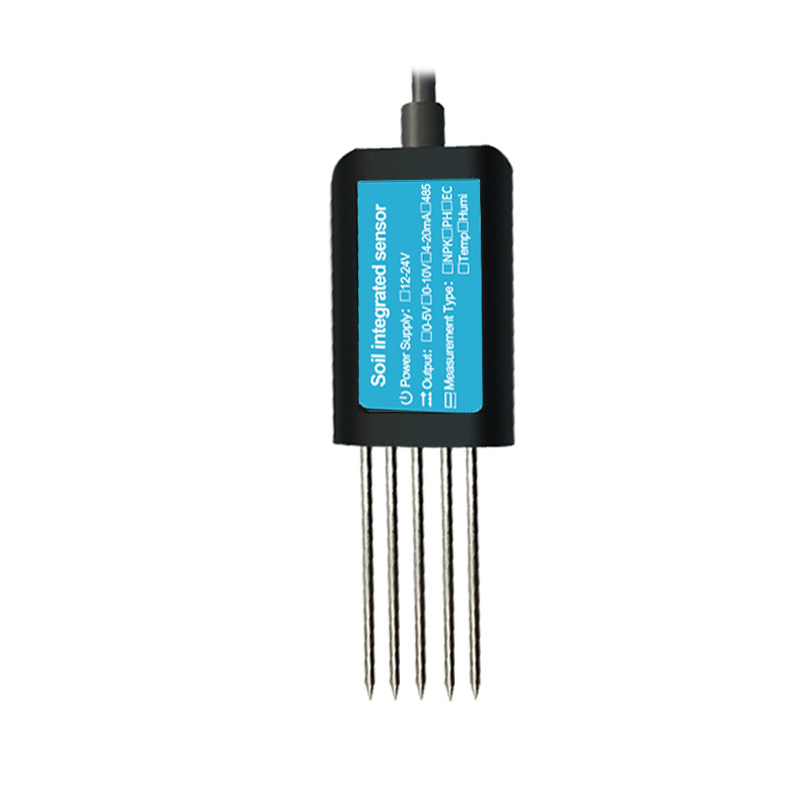Soil sensors are valuable tools used in agriculture, environmental monitoring, and research to assess various soil parameters. These sensors provide real-time data about soil moisture, temperature, pH levels, and nutrient content, among other factors. By understanding where soil sensors primarily monitor, we can gain insights into their applications, benefits, and their role in sustainable soil management. In this article, we will explore the main areas where soil sensors are deployed and discuss their significance in different fields.

Agriculture:
In agriculture, soil sensors play a crucial role in optimizing crop production, conserving resources, and minimizing environmental impacts. They monitor several key parameters:
a) Soil Moisture:
Soil moisture sensors measure the water content in the soil. Farmers use this information to determine when and how much irrigation is required. By avoiding over- or under-watering, farmers can optimize water usage, prevent water stress in plants, and increase crop yield.
b) Soil Temperature:
Soil temperature sensors monitor the temperature of the soil. This data helps farmers determine the optimal time for planting and harvesting crops. It also aids in managing the growth and development of plants, as temperature influences seed germination and root activity.
c) Soil Nutrients:
Soil nutrient sensors measure the concentration of essential nutrients such as nitrogen, phosphorus, and potassium in the soil. This information enables farmers to apply fertilizers precisely, avoiding excessive use that can lead to nutrient runoff and environmental pollution. By optimizing nutrient management, farmers can enhance crop growth and reduce fertilizer costs.
d) Soil pH:
Soil pH sensors determine the acidity or alkalinity of the soil. Different crops thrive under specific pH conditions. By monitoring soil pH, farmers can adjust soil amendments to create an optimal growing environment for crops. This helps maximize nutrient availability and uptake, leading to healthier plants and higher yields.
Environmental Monitoring:
Soil sensors also play a vital role in environmental monitoring and research. They help assess the health of ecosystems and contribute to sustainable land management practices. Here are some key areas where soil sensors are deployed:
a) Ecological Studies:
Soil sensors are used in ecological studies to understand soil characteristics and their impact on plant communities, biodiversity, and nutrient cycling. Researchers monitor parameters such as soil moisture, temperature, and nutrient content to study soil-plant interactions, soil carbon sequestration, and ecosystem dynamics.
b) Watershed Management:
Soil sensors are employed in watershed management programs to assess soil moisture levels and infiltration rates. This information helps in understanding water availability, runoff patterns, and groundwater recharge potential. By monitoring soil conditions, resource managers can make informed decisions regarding water allocation and conservation strategies.
c) Soil Contamination Monitoring:
Soil sensors are utilized to detect and monitor soil contamination from various sources, such as industrial activities, agriculture, or accidental spills. They measure parameters like pH, electrical conductivity, and specific ions to identify potential pollutants and assess soil quality. This data aids in remediation efforts and prevents further contamination of soil and water resources.
Research and Development:
Soil sensors are extensively used in research and development initiatives aimed at improving agricultural practices and understanding soil dynamics. Some key areas of research include:
a) Precision Agriculture:
Precision agriculture relies heavily on soil sensors for site-specific farming approaches. By collecting precise soil data, such as moisture, temperature, and nutrient content, farmers can create customized management plans for different areas within their fields. This leads to optimized resource utilization, reduced environmental impact, and increased crop yield.
b) Climate Change Studies:
Soil sensors are instrumental in climate change studies that focus on assessing soil carbon stocks, greenhouse gas emissions, and soil moisture dynamics. By monitoring these parameters, scientists can gain insights into the impact of climate change on soil ecosystems and develop strategies to mitigate its effects.
c) Soil Management Practices:
Soil sensors assist in evaluating the effectiveness of different soil management practices, such as cover cropping, conservation tillage, and organic amendments. By monitoring soil parameters, researchers can assess the impact of these practices on soil health, nutrient cycling, and water retention, leading to the development of sustainable agricultural systems.

Conclusion:
Soil sensors play a crucial role in various fields, including agriculture, environmental monitoring, and research. They provide real-time data on soil moisture, temperature, pH levels, and nutrient content, among other parameters, enabling informed decision-making and precise resource management. Whether it is optimizing irrigation in agriculture, monitoring soil health in ecological studies, or studying the impact of climate change on soil ecosystems, soil sensors contribute to sustainable soil management practices. By harnessing the power of soil sensors, we can enhance crop productivity, conserve resources, protect the environment, and ensure the long-term viability of our agricultural systems.